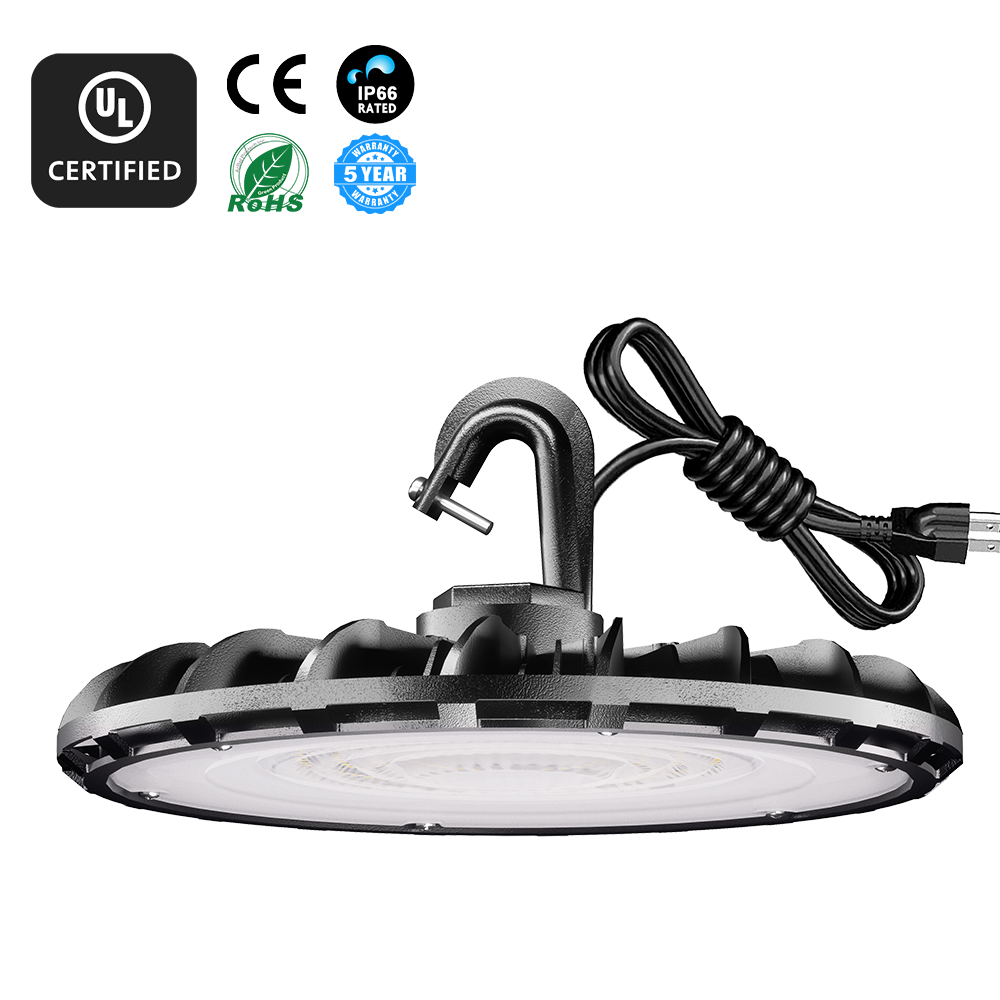What Are the Advantages of LED Industrial Lighting?
2025
Introduction - Overview of LED Industrial Lighting
LED industrial lighting has revolutionized the way businesses approach their lighting solutions, offering significant benefits over traditional lighting systems. As industries strive for greater efficiency and sustainability, LED technology stands out as a leading choice due to its advanced capabilities. Industrial settings demand robust and reliable lighting solutions, which is precisely what LEDs provide. They are particularly suitable for environments that require high durability and operational efficiency.
Evaluating Industrial Lighting Solutions
Assessing industrial lighting solutions involves a thorough comparison of LEDs, fluorescents, and high-intensity discharge (HID) lamps. LEDs have emerged as a superior choice because of their remarkable energy efficiency, extensive lifespan, and robustness against harsh conditions. According to the US Department of Energy, LED lighting can save up to 75% of the energy used by conventional lighting systems. Furthermore, the future of industrial lighting will continue to be shaped by advancements in LED technology, with ongoing improvements in brightness and efficiency. When selecting the ideal lighting solution, it's crucial to evaluate critical factors like cost-effectiveness, maintenance requirements, and the ability to achieve optimal energy efficiency.
Core Benefits Driving Adoption
The adoption of LED lighting in industries is driven by various core benefits that enhance operational efficiency and safety. LED lights significantly reduce energy consumption compared to traditional lighting systems, providing long-term cost savings and improved sustainability. They emit lower levels of heat, thereby increasing safety and reducing the risk of overheating. Additionally, LEDs can improve safety in industrial settings by providing high-quality lighting that reduces the risk of accidents and injuries. Case studies have demonstrated successful transitions to LED systems in industries such as manufacturing and warehousing, where lighting plays a crucial role in productivity and safety. Moreover, LEDs support compliance with increasingly stringent energy efficiency regulations, making them an ideal choice for modern industrial applications.
Energy Efficiency - How LEDs Reduce Power Consumption
Power Savings Compared to Traditional Lighting
LEDs significantly reduce power consumption compared to traditional lighting options, offering remarkable energy savings. For instance, according to the US Department of Energy, LED lighting can cut energy use by up to 75% compared to conventional lighting systems like incandescent bulbs and fluorescents. This substantial reduction in energy consumption translates into tangible long-term savings on energy bills, making LEDs an economically viable option for industrial applications. Industry experts often highlight these savings as a critical advantage of implementing LED technology, emphasizing the sustainable benefits that it brings to various sectors.
Light Output Efficiency Metrics
The efficiency of LED lighting is particularly evident in its lumens per watt (lm/W) performance, surpassing traditional lighting methods by a considerable margin. LEDs produce more light per unit of electricity, making them an ideal choice for maximizing illumination while minimizing energy consumption. Manufacturers provide efficiency ratings, helping industries gauge the effectiveness of LEDs in different applications. For instance, in many industrial settings, benchmarks for acceptable light output ensure that LEDs deliver adequate brightness without compromising energy efficiency. This higher lumens per watt ratio is a key reason behind the widespread adoption of LEDs across diverse industrial scenarios.
Cooling System Energy Reductions
LEDs emit significantly less heat compared to traditional lighting, reducing the need for extensive cooling systems and minimizing HVAC energy requirements. This lower thermal load leads to potential savings on cooling costs and enhances overall HVAC efficiency. Studies have shown a direct correlation between lighting choices and cooling energy demands, emphasizing the role of LEDs in driving down energy consumption even further. By decreasing heat emissions, LEDs not only help to maintain comfortable working environments but also contribute to substantial reductions in energy expenses associated with industrial cooling practices.
Durability and Longevity - Longer Lifespan of LED Lights
Operational Lifespan Expectations
LED lights offer a significantly longer operational lifespan compared to traditional lighting options. On average, LED lights can last between 25,000 to 50,000 hours, while incandescent bulbs typically provide around 1,000 hours and fluorescent lights extend up to 10,000 hours. The robust lifespan of LEDs results from their durable design and efficient operation, which minimizes wear and tear. However, it's important to note that operational conditions, such as temperature variations and usage patterns, can impact the longevity of LED lights. Studies have demonstrated that LED lighting performs exceptionally well in diverse environments, underscoring its adaptability and longevity benefits across industries.
Environmental Resilience Factor
LED lights are renowned for their resilience to various environmental factors, including vibrations and extreme temperatures. This toughness means that LEDs are less likely to fail under demanding conditions, reducing the need for frequent replacements. Industries such as mining and manufacturing frequently use LEDs because they withstand harsh conditions better than traditional lighting solutions. By maintaining functionality in environments that are difficult for other lighting systems, LEDs contribute to operational efficiency by lowering maintenance needs and costs.
Impact on Maintenance Scheduling
One of the significant advantages of the long lifespan of LED lights is the reduced frequency of maintenance and its associated costs. The durability of LEDs allows for less frequent replacements, thereby altering maintenance schedules and reducing labor costs. This factor is particularly pronounced in settings like industrial facilities and public spaces where lighting maintenance can be extensive and costly. Statistical analyses have shown that transitioning to LEDs can dramatically cut down maintenance expenses over time, increasing overall operational efficiency and freeing resources for other investments.

Cost Savings - How LED Lighting Cuts Operational Costs
ROI Analysis and Payback Period
Calculating the return on investment (ROI) for LED lighting projects is essential to understand the financial benefits. To compute ROI, we must first assess the initial cost and compare it against the savings in energy, maintenance, and replacement costs over time. For instance, in industrial settings where LED technology has replaced traditional lighting, the payback period can vary but often spans between 1 to 3 years. This is contingent on factors like operational hours, electricity rates, and existing infrastructure. In support of this, case studies from large manufacturing plants have demonstrated successful transitions where the initial investment in industrial LED lighting was recouped swiftly, underscoring the substantial cost savings and efficiency gains.
Replacement Frequency Reduction
The reduction in replacement frequency is a major contributor to cost savings over time with LED lighting. By diminishing the need for frequent replacements, businesses can dramatically lower their overall lighting budgets. For instance, the extended lifespan of LED bulbs—up to 25 times longer than traditional options—translates into fewer purchases and reduced labor costs associated with replacements. Organizations that documented their transitions to LED lighting have consistently reported significant dips in lighting budget allocations earmarked for replacements, reinforcing the LED lifecycle's profound financial advantages.
Utility Rebate Opportunities
Utility rebate programs present another avenue for savings when transitioning to LED lighting. Many utility companies offer rebate incentives to businesses that reduce their energy consumption through LED adoption. These rebates can cover a substantial portion of the initial cost, making the switch financially attractive. For example, companies have saved thousands in upfront costs due to these rebates, which, coupled with long-term energy savings, results in a highly advantageous switch. Data from surveys of businesses that have tapped into these programs reveal substantial financial incentives, confirming the role of utility rebates in enhancing the economic feasibility of LED lighting upgrades.
Environmentally Friendly - Reduced Carbon Footprint of LED Lights
Carbon Emission Reductions
Switching to LED lighting significantly contributes to carbon emission reduction. LEDs consume less energy compared to traditional lighting options, which translates to a lesser demand from power plants. This reduction in demand directly impacts greenhouse gas emissions since most of the world's electricity is generated from fossil fuels. For instance, reports from environmental agencies suggest that global adoption of LED lights could cut down CO2 emissions by millions of metric tons annually. Such reductions are comparable to removing millions of cars from roads, thus illustrating the environmental potential LEDs hold in battling climate change.
Recyclable Materials Advantage
LED lights offer ecological benefits beyond mere energy efficiency, notably through their use of recyclable materials. Manufacturing LEDs involves sustainable practices that ensure reduced environmental impact during production and end-of-life disposal. The materials used in LEDs, such as metal heat sinks and circuit boards, are highly recyclable, enhancing sustainability. Statistics demonstrate that LED components are recycled at higher rates compared to traditional lighting, thereby minimizing waste and contributing to a circular economy that prioritizes reuse and recycling over discarding of products.
Mercury-Free Disposal Safety
One of the key environmental advantages of LEDs is their mercury-free composition, making disposal safer. While fluorescent bulbs contain mercury—a toxic element that poses health and environmental risks—LED lights are devoid of such harmful substances. This absence of mercury ensures LEDs can be discarded without adhering to stringent regulations and safety guidelines, which are essential for other lighting technologies. Safety assessments underscore LEDs' disposal benefits, reinforcing their reputation as a safe alternative that prevents contamination of landfills and water sources, promoting a healthier ecosystem.
Conclusion - Why LED Industrial Lighting is a Smart Investment
Synthesized Benefit Analysis
Investing in LED industrial lighting offers comprehensive advantages that encompass cost efficiency, sustainability, and long-term benefits for businesses. LEDs provide superior energy efficiency compared to traditional lighting solutions, leading to substantial savings on electricity bills. These savings are coupled with reduced maintenance costs due to the extended lifespan of LED lights. Additionally, the environmental benefits, including lower carbon emissions and non-toxic disposal options, bolster the case for transitioning to LEDs. By evaluating their current lighting solutions, businesses can capitalize on these LED benefits and make informed decisions that are both financially and environmentally rewarding.
Operational Upgrade Recommendations
For businesses contemplating an upgrade to LED lighting, it's essential to proceed with a well-formulated strategy that optimizes both cost and efficiency. Start by assessing current lighting configurations and identifying areas where energy consumption can be reduced. Seek consultation services to tailor an upgrade plan that's suited to specific operational needs. These consultations can offer insights into integrating LEDs seamlessly with existing infrastructure. Additionally, consider partnerships with LED specialists to ensure smooth integration, while maximizing the efficiency gains and minimizing potential disruptions during the transition. These actionable recommendations will pave the way for a successful operational upgrade to LED lighting systems.
FAQ
What are the main advantages of LED industrial lighting?
LED industrial lighting offers energy efficiency, long lifespan, reduced carbon emissions, considerable cost savings, and improved safety over traditional lighting options.
How do LEDs contribute to operational cost savings?
LEDs help cut operational costs through reduced energy consumption, longer replacement cycles, decreased maintenance demands, and utility rebate opportunities.
What environmental benefits do LED lights offer?
LED lights offer reduced carbon emissions, rely on recyclable materials, and are mercury-free, making their disposal safe and environmentally friendly.
How long do LED lights typically last?
LEDs can last between 25,000 to 50,000 hours, much longer than traditional options like incandescent or fluorescent lights.
Are there utility rebates available for switching to LED lighting?
Yes, many utility companies offer rebates to businesses that upgrade to energy-efficient lighting like LEDs, helping offset initial costs.

 EN
EN
 AR
AR
 BG
BG
 HR
HR
 CS
CS
 DA
DA
 NL
NL
 FI
FI
 FR
FR
 DE
DE
 EL
EL
 HI
HI
 IT
IT
 JA
JA
 KO
KO
 NO
NO
 PL
PL
 PT
PT
 RO
RO
 RU
RU
 ES
ES
 SV
SV
 CA
CA
 TL
TL
 IW
IW
 ID
ID
 LV
LV
 LT
LT
 SK
SK
 SL
SL
 UK
UK
 ET
ET
 GL
GL
 HU
HU
 MT
MT
 TH
TH
 TR
TR
 FA
FA
 MS
MS
 GA
GA




